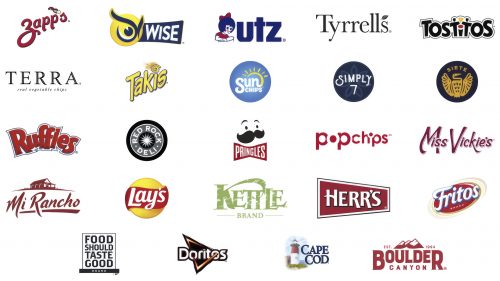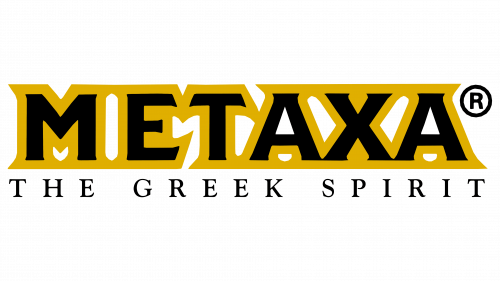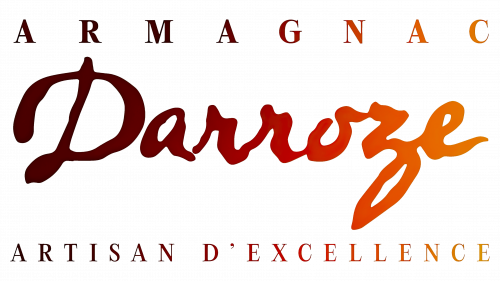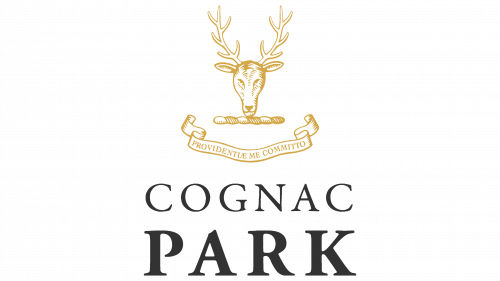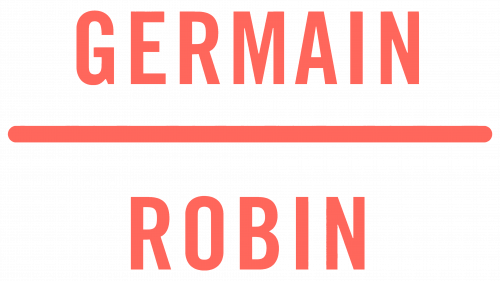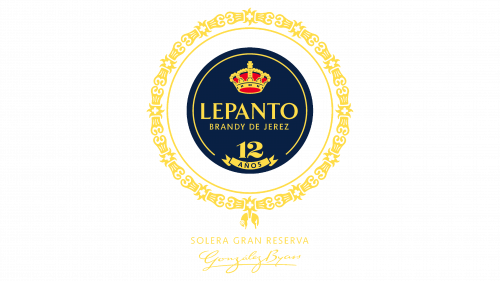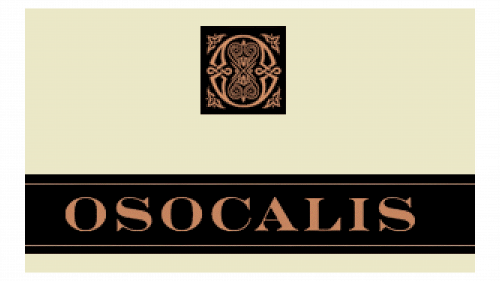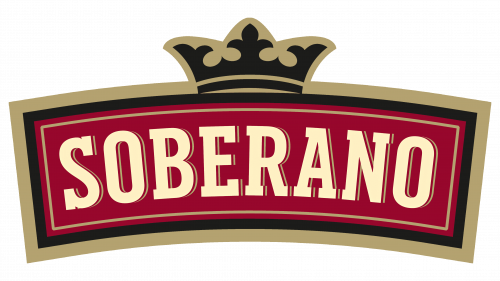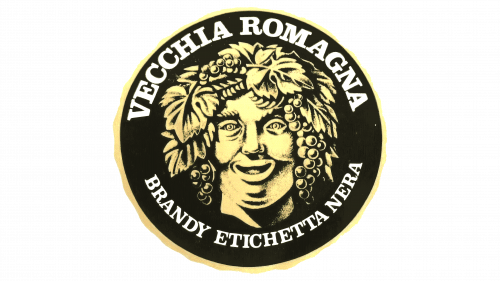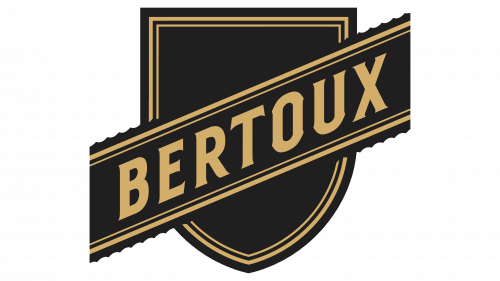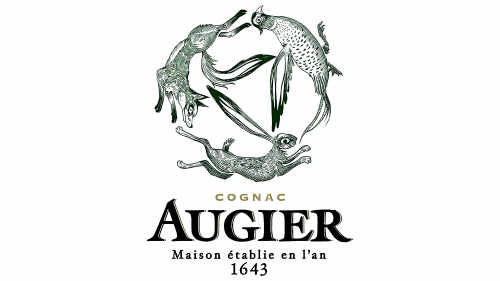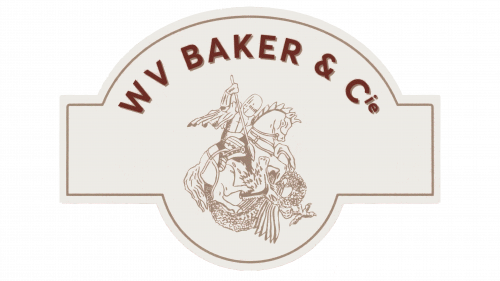Brandy is a special drink made from wine. A long time ago, people in the Roman Empire started making it. Then, during the old times in Europe, they got good at it because they also got better at making wine. The first time we hear about brandy is from Spain in the 1200s, when monks made it in their monasteries to help people feel better.
The 1500s and 1600s were when brandy became popular, not just as medicine but as a drink people enjoyed. The area in France called Cognac became famous for making the best brandy. Since then, people worldwide have loved brandy, and you can find many different kinds.
How a brandy looks on the bottle, with its logo, is important. A good logo makes people remember the brandy and think it’s special:
- Some brands have pictures of grapevines, glasses, and barrels on their logos to show they have a long history and know how to make good brandy.
- Fancy brandies might have pictures of castles or big houses to make them look fancy and special.
- Some use fancy writing and pictures like crests or horses to show they’re top-notch.
- Newer brandies might have bright and fun pictures to stand out and be remembered.
Making a great logo is a big deal for brandy makers. It helps people notice their brandy and makes them want to buy it.
Hennessy
Hennessy, a famous cognac brand, was started in France in 1765 by an Irish officer named Richard Hennessy. After working for King Louis XV, he made Cognac his home. Hennessy is known for creating excellent cognac, like the Hennessy XO, which became a benchmark for luxury drinks.
The Hennessy logo, with its bold name and an arm holding an axe, reflects the brand’s strength and history. It includes a phrase, “Maison Fondée en 1765,” highlighting its long-standing tradition.
Despite challenges, like England trying to block their shipments during the French Revolutionary Wars, Hennessy grew globally, thanks to a partnership with the Fillioux family, renowned bankers. The brand became a market leader under Maurice Hennessy, Richard’s great-grandson. Its merger with Moët Hennessy Louis Vuitton (LVMH) in 1971 boosted its reputation by combining tradition with luxury.
Over 265 years later, Hennessy is a top cognac maker, with products like Hennessy XO symbolizing luxury and craftsmanship. The logo invites people to appreciate a tradition that spans centuries, showcasing Hennessy’s commitment to quality.
Martell
In 1715, a smart man named Jean Martell started a company in France to make a special kind of drink called cognac. He was the first to use a special grape that made the drink taste smooth. This drink came from a place called the Borderies region. After Jean passed away, his wife Rachel and their son kept making the drink better.
By the 1860s, people from North America to Asia liked Martell’s drink. In the 20th century, they made a new drink many people liked. Later, two big companies helped Martell reach even more people.
Today, Martell is still known for making good cognacs. They win awards, and many people enjoy their drinks. They still make their drinks in Cognac, France.
Martell’s symbol is a blue word, “MARTELL,” with a gold bird above it. This bird means beauty and speed, which matches Martell’s quality and long history. They have a gold shield that shows they are proud of making great drinks since 1715.
Courvoisier
Courvoisier began in 1835 in Jarnac, in the famous Cognac region of France. Felix Courvoisier, the founder, came from a family that had been making cognac since the 1700s. He aimed to make Courvoisier a brand known for its fancy and high-quality cognac, and he succeeded. It wasn’t long before Courvoisier became a favorite among European royalty.
Despite challenges like the phylloxera bug, which destroyed many vineyards in France, Courvoisier didn’t give up. They developed grapes resistant to the bug, saving their business. By the 1900s, Courvoisier expanded to other countries, including the UK and USA, becoming popular in many classic cocktails.
The Courvoisier logo is simple yet meaningful, featuring the brand name prominently and an image reminiscent of Napoleon, adding a sense of intrigue. The phrase “Le Cognac de Napoleon” feels like drinking a piece of history. The design reflects Courvoisier’s commitment to tradition and elegance.
Now under Beam Suntory, a part of Japan’s Suntory Holdings, Courvoisier continues to produce award-winning cognac sold in over 80 countries. This maintains Courvoisier’s reputation as a leading producer of fine French cognac.
Camus
In 1863, Jean-Baptiste Camus started a family business in the Cognac area of France, aiming to make top-quality cognac. His company quickly earned a reputation for producing smooth and delicious brandy by blending traditional methods with innovative ideas.
The Camus logo is both simple and elegant. It features the name “CAMUS” in large letters with a soft golden shine and includes a four-leaf design in gold, symbolizing luck and luxury. This logo reflects the brand’s commitment to excellence and rich family heritage since 1863.
Jean-Baptiste’s son, Gaston, modernized the company, and despite challenges like the World Wars, Camus thrived and celebrated its 100th anniversary in 1963 with a special cognac release. Cyril Camus, a later family member, expanded the brand globally. Now, over 150 years later, Camus is enjoyed in more than 160 countries and employs about 500 people, showcasing the growth of a small family operation into a globally recognized brand known for its quality and heritage.
Remy Martin
Back in 1724 in France, Rémy Martin started making a special brandy in the Cognac area. He was the first to use a special way of making it twice as nice, which helped make their brandy famous.
Rémy’s family kept making their brand better and started selling it to other countries like the UK and the USA. They came up with new ways to make their brandy even better.
In the 1900s, the company grew worldwide, thanks to André Renaud and his son Maxime. A big moment for them was creating a logo in 1925 with a centaur, a creature that’s half person, half horse. This logo showed how smart and strong their brandy was, just like the centaur. It had a vine and a torch to show they were all about making great brandy from grapes.
This logo and what it stands for has been with Rémy Martin for over 95 years, showing everyone they’re good at making their special brandy.
Hine
Thomas Hine, an Englishman, moved to France in 1763 with a big dream: to create the best cognac. He started his company in the Cognac region, and for more than 250 years, it’s been crafting high-quality brandy. This brandy is known for its tradition and great taste, something Thomas wanted from the start.
The Hine logo is simple but stands out. It features “HINE” in bold red letters with a deer image above, symbolizing their love for elegance and simplicity. The logo proudly displays “MAISON FONDÉE EN 1763,” highlighting the company’s long history since 1763 of making straightforward, pure drinks.
Thomas began his journey by the Charente River, and his family continued to grow the business, even exporting their brandy to England and beyond. Despite challenges like the phylloxera bug destroying grapevines, Hine kept producing excellent cognac. They’ve navigated through tough and good times by partnering with the right people and expanding their reach. As more people started to enjoy cognac again in the late 1900s, Hine welcomed new enthusiasts worldwide, always true to their original goal.
Today, Hine is celebrated as a premium brandy producer. The company has stayed in the family for seven generations, earning love and respect worldwide. This success is a testament to Thomas Hine’s vision of crafting exceptional cognac, making Hine a symbol of luxury and quality in the drink world.
Metaxa
In 1888, a man named Spyros Metaxas in Athens, Greece, created a unique drink. He mixed Greek wines with sweet Muscat wines from Samos and some Mediterranean herbs. This mixture made an amber drink, tasted great, and smelled nice. The Metaxa brand is proud to be a lively Greek drink, shown by its logo with big, bold letters and “THE GREEK SPIRIT” written underneath.
Metaxa became popular in places like Egypt and the Ottoman Empire outside Greece. By 1936, they built a new facility near Athens to keep up with demand, blending old and new methods to make their brandy stand out.
In the 1960s and 1970s, Metaxa improved their drink with the help of French experts, leading to a 5-star version. In the 1980s, they began using special French oak barrels for an even better flavor.
A big moment for Metaxa was in 1998 when they released their first Private Reserve, a special drink made in small amounts from their best stock. Metaxa is enjoyed in over 50 countries today, maintaining its rich, sweet taste with a hint of spice from the unique blend of Greek and Muscat wines.
Darroze Armagnac
In 1974, Francis Darroze started Darroze Armagnac, which is now a top spot for getting Armagnac. This is a special kind of brandy from Gascony, France. The Darroze family takes pride in creating excellent Armagnac that highlights the unique features of their local area.
Their logo combines elegance and tradition, featuring the Darroze name in handwritten style and “ARMAGNAC” in bold letters. This design represents their commitment to quality and tradition. The logo’s colors and the motto “ARTISAN D’EXCELLENCE” reflect the rich taste of their brandy.
Francis grew up in a family skilled at selecting and making the finest Armagnac. He began by choosing the best brandies from the area, focusing on those from a single year or barrel to represent the local taste truly.
Darroze became known for selecting these exceptional Armagnacs, focusing on their flavor and complexity. They expanded their selection over time, including Signature blends and rare editions, always aiming to highlight the best of their region.
Now led by Francis’s son Marc, Darroze remains a leading name in Armagnac. They offer unique bottles that share the story of Armagnac production in their area and the Darroze family’s long history of crafting fine spirits.
Cognac Park
In 1993, Cognac Park was created by Jérôme Tessendier, who has been part of a cognac-making family since 1880, and Dominic Park, a spirit-loving entrepreneur. Their goal was to highlight the best of the Ugni Blanc grape and the unique Cognac region, focusing on producing pure and elegant cognacs.
Cognac Park emphasizes organic production to ensure their cognacs naturally reflect their origin, demonstrating a commitment to environmental care and quality.
The brand’s symbol, a stag with large antlers, alongside the motto “PROVIDENTIAE ME COMMITTO,” represents strength, natural beauty, and a forward-thinking approach. Their gold and black logo encourages people to explore their varied flavors, each showcasing Cognac Park’s distinct character and heritage.
In 2008, Dominic Park passed the brand to the Tessendier family. Jérôme and Michel Tessendier continued to innovate, even producing some of the first extra-old single-estate cognacs in the early 2000s. Today, Cognac Park is internationally recognized for its exceptional cognacs, maintaining high standards and catering to connoisseurs of fine spirits.
DEAU Cognac
DEAU Cognac comes from the Grande Champagne area in France, which is famous for its brandy. It all started in 1685 with Louis Deau in the Charente region. His family became experts at making brandy, improving it over generations. By the 1700s, Louis’s grandson, Jean, was creating better brandy by aging and mixing it. Later, Pierre Deau expanded the business abroad, spreading its reputation.
Even Napoléon Bonaparte liked this brandy, boosting DEAU’s fame. The family then named their business Deau & Fils, highlighting their heritage. In the 1870s, they faced a challenge from the phylloxera bug but managed to keep their quality high, thanks to their aging and blending skills. Over the years, DEAU has remained a family-run business known for its excellent aged cognac.
Today, DEAU keeps making top-quality cognac with a griffin as its symbol, representing its long history and ambition. Their logo features this griffin against a white background, looking over a hill with “DEAU COGNAC” in bold, showing their commitment to tradition and innovation.
Germain-Robin
Germain-Robin is a brandy maker that started in Ukiah, California 1982. Ansley J. Coale, Jr., a local rancher, and Hubert Germain-Robin, from a well-known Cognac-making family in France, teamed up. They wanted to create a unique brandy by combining French distilling techniques with the diverse grapes of California. They focused on using special grapes from Mendocino County and released their first brandy in 1983, quickly becoming popular for its quality.
By the late 1980s, Germain-Robin was a growing name in the brandy world. As demand increased, they moved to a larger facility in 1995, allowing more production and visits from people interested in their process. Thanks to having more space, they started using a wider variety of grapes in the early 2000s.
Today, Germain-Robin is recognized for its excellent American brandy, offering products like XO, vintage brandies, and Apple brandies. It honors its French origins while embracing California’s winemaking traditions and is enjoyed worldwide.
The Germain-Robin logo, characterized by simplicity and modernity, employs a clean coral-red font segmented by a bold line. This design choice symbolizes the brand’s harmonious blend of traditional and modern elements, making it attractive to a wide audience that appreciates classic and contemporary aesthetics.
Jean Luc Pasquet
Jean Luc Pasquet, located in France, specializes in producing a distinctive type of brandy known as cognac. Utilizing grapes grown on their estate, they adhere to natural production methods. The logo, featuring the initials “JLP,” emphasizes simplicity and an organic approach, reflecting the brand’s commitment to natural and authentic production techniques.
The story starts in 1730, with the Serillet family growing grapes. But it wasn’t until 1977 that Jean-Luc Pasquet and his wife started making their cognac. Jean-Luc chose to farm in a way that was good for the planet in 1993, and they got official recognition for it in 1998. When Jean-Luc’s son, Jean, and his wife, Amy, took over, they kept the tradition and added new ideas.
In 2017, the Pasquets decided to stop using common names for their cognac and came up with their way of talking about their products. Almost 300 years later, they’re still making organic cognac and wine. Their commitment to quality, tradition, and improvement makes their estate stand out.
Lepanto
Lepanto is a unique brandy made by the González Byass family in Jerez de la Frontera, Spain, since 1886. They use an old method called the Solera system and special Palomino grapes to make a brandy with a one-of-a-kind taste. Lepanto became popular worldwide despite challenges like the Spanish Civil War damaging their cellars. In the 1960s, they updated their bottle design and prepared for the future with new family members leading the way.
The 1980s were important for Lepanto; they expanded their operations and produced even more luxurious brandies. Over the years, they’ve created special limited editions that have won fans globally, always using their beloved Palomino grapes.
Today, the González Byass family continues to produce Lepanto, maintaining a tradition of crafting high-quality brandy in Jerez. They use one of Spain’s oldest brandy-making setups to create brandies loved by people everywhere.
Lepanto’s logo is elegant, featuring a navy blue oval with a gold border, the name “LEPANTO” beneath a royal crown, and details like “BRANDY DE JEREZ” and “12 AÑOS” to indicate its age. It includes “SOLERA GRAN RESERVA González Byass,” highlighting their traditional brandy-making method and the family’s legacy.
Osocalis
In Soquel, California, near Santa Cruz, there’s a small place called Osocalis distillery. It started in the early 1990s and got its name from the local Native American history. This distillery is famous for making special brandies. They use old ways from Europe and the many fruits from California. Their brandies taste good and are unique.
Osocalis has a fancy logo with its name in stylish letters on a dark background. A knot design above the name shows the distillery’s long and interesting history in spirit-making. The light background of the logo makes it look very nice and high-quality.
Since it started, Osocalis has been making small amounts of spirits, combining European techniques with California’s fruit flavors. From the 2000s to the 2010s, they became known for their great brandies, liqueurs, and fruit spirits that show off California’s fruits and grapes.
Almost 30 years later, the same family still runs Osocalis. They keep making spirits the traditional French way and use California’s different fruits. Each bottle from Osocalis shares a story of tradition, skill, and the unique flavors of California.
Philbert
In the famous Cognac area of France, there’s a brandy brand called Philbert Brandy. They have a unique method of aging their brandy in oak barrels underwater in their cellars. This special step gives their brandy a more complex and rich taste. The Philbert Brandy logo is simple and modern, using a stylish font. It mentions Etriac and Touzac in France, where the brandy is made in small batches, meaning not a lot is made at once. This indicates that their brandy is special and made with care. They use “The Single Estate” to highlight that their cognac comes from a specific place, blending a modern look with traditional cognac-making methods.
Philbert Brandy was started in the late 1800s by the Comandon Cognac company, a famous name in cognac. They named it after a French military hero from the Comandon family, adding a sense of heroism and nobility to the brand. Making Philbert Cognac has been a key part of Comandon since the early 20th century, maintaining tradition while innovating to make their cognacs stand out.
Carlos I
Carlos I brandy is from Jerez, Spain, and is well-known for its sherry. It has a smooth and complex flavor because it’s aged using an old solera method. The brand’s logo has a knight on a horse, symbolizing bravery and honor from the past. Carlos I is written in large, elegant letters, highlighting its long history and good reputation.
The Osborne family started the Carlos I brandy in 1772, focusing on wine and spirits. By 1863, they created Carlos I brandy, quickly becoming a favorite. In the 1920s, they teamed up with the Soto de Rueda family to concentrate on making the best brandy.
Carlos I was chosen in 1932, named after a famous Spanish king from the 1500s, making it stand out and marking a new era for Spanish brandy. Carlos I became known worldwide for its quality without being too expensive.
In the late 1900s, the Osborne family updated their brandy-making process but used the solera method to ensure consistency. In 2003, the brand returned to its original family, securing its future. Today, Carlos I is celebrated globally for over 90 years, showcasing Spanish culture and tradition.
Soberano
Soberano is a well-known brandy from Spain, made in the Jerez area by a company called González Byass. It’s famous for tasting smooth and rich. They make it using an old technique called solera aging, which is a big part of why people like it a lot, in Spain and other places too. The Soberano logo looks fancy with an elegant writing style, a deep red background, and gold edges. There’s even a crown to show it’s a good brandy.
In 1835, Manuel Maria Gonzalez Angel started the company with an Englishman named Robert Blake Byass in Jerez, Spain. By the 1860s, they sent their sherry to places like the UK, where it became popular. They went through some hard times, like the Spanish Civil War that hurt their buildings, but Antonio Gonzalez Gordon fixed things up in the 1940s.
The 1960s were important for Soberano because that’s when their Tio Pepe Fino Sherry became big. They kept adding more good sherries and brandies over time. In 2001, another company called Grupo Estévez bought them and updated their equipment, which helped Soberano grow even more. By the 2010s, Soberano won awards and became known as a top maker of sherry.
Today, Soberano still makes its famous sherries and brandies, using old methods and new ideas. The González family still runs the show, making sure Soberano remains a brand people know and love for great-tasting drinks.
Vecchia Romagna
Vecchia Romagna is a famous Italian brandy made from Trebbiano grapes and aged in oak barrels, giving it a rich and complex flavor. Its logo, featuring the name “VECCHIA ROMAGNA” in large letters alongside an image combining a face with grapevines and leaves, is inspired by Bacchus, the Roman god of wine. This design signals the brandy’s high quality. The words “BRANDY ETICHETTA NERA” on the logo mean it’s a special black label version, presented in a black and gold color scheme emphasizing its classiness.
The brandy’s story began in 1820 at the Buton distillery in Bologna, Italy, where it was initially produced and sold locally under various names. In 1939, it was officially named Vecchia Romagna, marking a new era. By the 1960s and 1970s, it had become popular in Italy for its superior brandy.
In 1999, Gruppo Montenegro acquired the Buton Distillery and Vecchia Romagna, further boosting its growth and solidifying its status as a top Italian brand. By 2018, it was Italy’s best-selling brandy.
Today, under Gruppo Montenegro’s ownership, Vecchia Romagna continues to be celebrated for its unparalleled quality and flavor. It represents Italian brandy production’s rich tradition and expertise, appealing to connoisseurs and those who enjoy fine brandy.
Bertoux
Bertoux Brandy is a special drink from California. It’s not just for drinking straight but also for mixing cocktails. It’s made by blending different brandies aged in American and French oak barrels for three to seven years, making it perfect for drinks.
Jeff Bell and Thomas Pastuszak, the people behind Bertoux, are good at what they do. Bell is a famous bartender, and Pastuszak is a top sommelier. They teamed up to make this brandy in 2018, aiming to get it into fancy places in big cities like New York, Los Angeles, and San Francisco.
Bertoux’s logo looks modern and eye-catching. The brand’s name is on a dark banner over a shield with neat edges. The design mixes old and new styles, ensuring it stands out and fits well in today’s drink scene.
Augier
In 1643, in the old city of Cognac, France, Philippe Augier started a company called Augier. It first sold wine but soon became known for making a special cognac. This cognac was made from grapes from one area, highlighting the unique flavor of those grapes. Even when a big company, Pernod Ricard, bought Augier in 2013, it stayed true to its roots, blending tradition with innovation for over 300 years.
The Augier logo features a wolf, a hare, and a bird that looks like a pheasant, all in a circle. This design nods to old tales and art where animals were used to tell stories. The logo is detailed and brings the brand’s history of art and cognac-making to live. Under the animals, “AUGIER” and “1643” are written in an old-style font, adding a classic feel and reminding people of the brand’s long history.
Singani
Singani is a unique type of brandy from Bolivia that’s been around for over 500 years. It’s made from a specific kind of grape called Muscat of Alexandria. These grapes are grown in the high Andes mountains. The logo for Singani is straightforward, featuring the word “singani” in black and the number “63” in bright red. The red number might represent a significant date or a special recipe, which makes the brand stand out.
The story of Singani begins in the early 1500s, shortly after the Spanish arrived in South America. Monks in present-day Bolivia started growing Muscat grapes and turning them into Singani brandy, initially for use in church wine. Over time, more people began making and enjoying Singani, a popular beverage.
By the 1800s, the production of grapes for wine and Singani became more structured, marking the start of Bolivia’s Singani industry. People appreciated its clear and smooth taste due to the high-altitude grapes. Singani is still produced using the same methods and high-quality Muscat grapes from specific regions in Bolivia. As it becomes available in other countries, more people worldwide are discovering this distinctive brandy, celebrated for its rich heritage and excellent taste.
WV Baker & Cie
In 2022, Benjamin Baker started a new brandy company named WV Baker & Co. in the Cognac region of France. This company stood out because it made brandy in small batches, sticking to old-fashioned methods to ensure top quality. They chose the best ingredients and used traditional ways to make their brandy, which made brandy enthusiasts worldwide love it for its distinct and unforgettable flavor.
WV Baker & Co. logo features a knight in armor on a horse, appearing as if he’s just won a battle. This image reflects the company’s commitment to excellence and ambitious goals in brandy-making. The logo is intricate, with layers that symbolize the brandy’s complex tastes, mirroring its meticulous creation process. The logo’s earthy colors nod to brandy’s long history, and its shield-like shape with a unique notch represents the company’s pledge to maintain high standards and honor its rich heritage.
Although WV Baker & Co. is a newcomer, having been established only in 2022, it’s quickly earning a reputation as a noteworthy Cognac producer. The company’s logo and values highlight a deep appreciation for time-honored brandy-making techniques while eagerly introducing innovative ideas to the spirits industry. WV Baker & Co. balances respect for tradition with a drive to offer new and exciting options in the world of brandy.
Marks & Spencer
Marks & Spencer is a big store from Britain that started as a small stall in Leeds in 1884. Michael Marks from Poland started it, and Thomas Spencer joined him later. They sold only British-made things with clear prices. This made them popular, and they opened their first big store in Manchester in 1894. In 1903, they became officially known as Marks & Spencer Ltd and started opening more stores across the UK. They were one of the first stores where customers could pick their items themselves, starting in 1926. They started selling food and household items. By the 1950s, they opened stores in other European countries and became famous for their good quality, especially food.
In the 1970s, they moved their main office to London and opened stores in Canada and Hong Kong. But in the late 1990s and 2000s, they focused more on their UK stores and updated their clothing to attract more customers.
Marks & Spencer is still well-known in the UK, with over 1,000 stores. They sell many high-quality items, including food and drinks, to many people. Their logo looks classy, with the letters “M&S” and “EST. 1884” showing their long history and dedication to quality.
